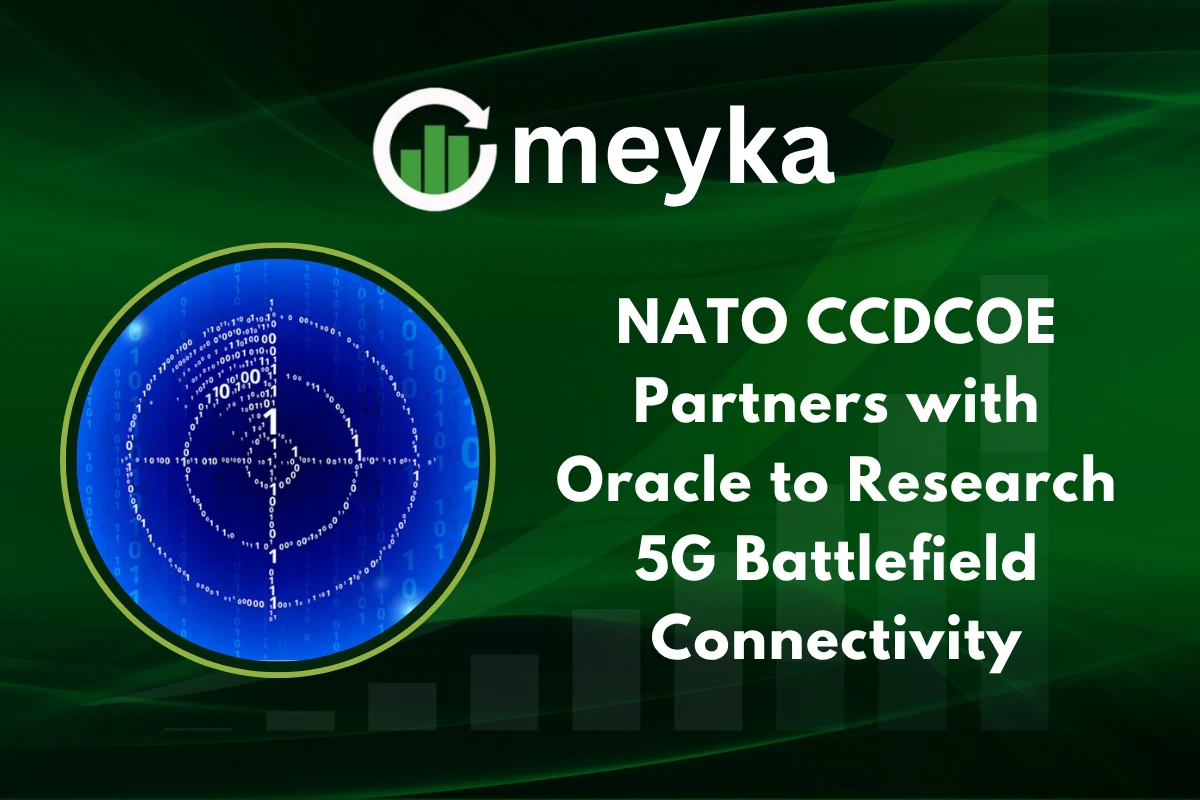NATO CCDCOE Partners with Oracle to Research 5G Battlefield Connectivity
The NATO CCDCOE has chosen Oracle and partner Druid Software to research and secure private 5G networks for battlefield connectivity. The work supports NATO research, war gaming and cyber defence exercises. The project aims to test secure roaming, data protection, and resilient edge computing for allied operations.
This collaboration signals a step change in how NATO experiments with modern communications technologies.
NATO CCDCOE and Oracle: Partnership Overview
What the agreement covers
The CCDCOE will work with Oracle and Druid to design, deploy and secure private 5G networks that can be used in realistic military exercises. Oracle’s 5G Security Edge Protection Proxy, deployed over Druid’s Raemis core and Oracle Roving Edge devices, was verified during a pilot and will form the backbone of the effort.
Official framing and goals
The partners say the aim is to deliver high-performance connectivity that protects sensitive data and enables rapid, secure information sharing in contested environments. The CCDCOE will share research results with NATO allies to support operational readiness.
Why did NATO CCDCOE choose Oracle? Oracle’s SEPP technology passed a pilot verification, and Oracle plus Druid offer a tested stack for secure 5G roaming and edge computing.
NATO CCDCOE’s Role in Cybersecurity Innovation
The centre’s mandate and expertise
The NATO CCDCOE, based in Tallinn, Estonia, is a multinational cyber defence hub. It conducts research, training and exercises that cover technology, strategy, operations and law for NATO allies. The centre focuses on preparing member states for advanced cyber threats.
Why research matters for alliances
Research by the CCDCOE creates tested playbooks and technical insights that can be used across allied forces. Private 5G networks let NATO simulate real battlefield communications while retaining control over data and interoperability. That makes the CCDCOE’s research especially valuable.
What will NATO CCDCOE report back to allies? Verified technical findings on secure 5G configurations, roaming security, edge deployments, and lessons for operational use.
NATO CCDCOE and Oracle’s 5G Technology Stack
Core technologies in use
Oracle’s Security Edge Protection Proxy (SEPP) is central to securing roaming 5G messages. It provides firewall capabilities recommended by the GSMA, plus encryption in transit and at rest. The SEPP ran on Druid’s Raemis 5G core over Oracle Roving Edge nodes during the pilot.
Edge computing and resilient connectivity
Oracle’s Roving Edge devices let compute and analytics run close to the front line. That reduces latency and keeps critical workloads running even when links to central clouds are intermittent. For NATO exercises, this matters for real-time command, ISR feeds, and autonomous system coordination.
How will 5G improve battlefield coordination? By enabling faster data sharing, lower latency for command systems, and secure roaming between allied networks, 5G supports tighter, faster coordination.
NATO CCDCOE: The Future of Battlefield Connectivity and Data Security
Use cases and war-gaming scenarios
Private 5G networks can support drone control, sensor fusion, augmented reality for troops, and secure voice and messaging across coalition forces. The CCDCOE will use war-gaming to test these scenarios and expose security gaps before real-world deployment.
Data integrity and confidentiality measures
Oracle’s SEPP and cloud security features aim to deliver end-to-end confidentiality and integrity for roaming messages. That is crucial when data crosses national or commercial operator boundaries during multinational operations. The combination of encryption and hardened firewalls protects mission-critical information.
Is the solution only for exercises? The initial work focuses on research and war gaming, but the validated technologies can inform operational deployments across NATO allies.
NATO CCDCOE: Implications for Global Defense and Allied Communication
Strategic and operational effects
Validating secure 5G in NATO contexts helps build interoperable standards for allied networks. That makes combined operations more reliable and reduces friction when forces need to share time-sensitive intelligence. It also helps partners adopt hardened, cloud-edge architectures that match operational tempo.
Industry and vendor dynamics
Bringing Oracle and Druid into NATO research shows how enterprise cloud and telecom vendors can support defence needs. It also highlights the importance of vendor verification and independent validation in defence procurement. NATO’s approach stresses tested solutions with clear security properties.
How might this shape future procurement? NATO allies may favor verified, interoperable stacks that combine cloud, edge, and telecom capabilities with clear security guarantees.
NATO CCDCOE: Risks, Governance and Next Steps
Security and supply chain risks
Deploying vendor solutions in defence contexts raises supply chain and sovereignty questions. NATO CCDCOE research will need to assess vendor controls, firmware integrity, and the ability to operate under contested conditions. Independent testing and transparency will be key.
Roadmap and collaboration plans
The CCDCOE will continue pilots, expand tests across member networks, and publish findings for allied nations. The goal is practical guidance for secure private 5G, federation across operators, and resilient edge deployments that work under stress. Oracle and Druid will refine tools as exercises surface new requirements.
What are the immediate next steps? Scale lab tests into wider federation trials, validate interoperability, and document technical recommendations for allies.
Conclusion: Why the NATO CCDCOE–Oracle Partnership Matters
The partnership between NATO CCDCOE and Oracle points to an important shift: alliances are moving from theory to tested practice in 5G-enabled battlefield communications. By combining Oracle’s SEPP and cloud-edge tools with Druid’s 5G core, the CCDCOE can evaluate secure roaming, edge resilience, and real-time data sharing in war-gaming contexts.
The outcomes will help shape standards, procurement choices, and operational playbooks across NATO member states. As hybrid threats and contested networks grow, validated private 5G and secure edge computing will be central to allied readiness and resilience.
Disclaimer
The above information is based on current market data, which is subject to change, and does not constitute financial advice. Always do your research.






